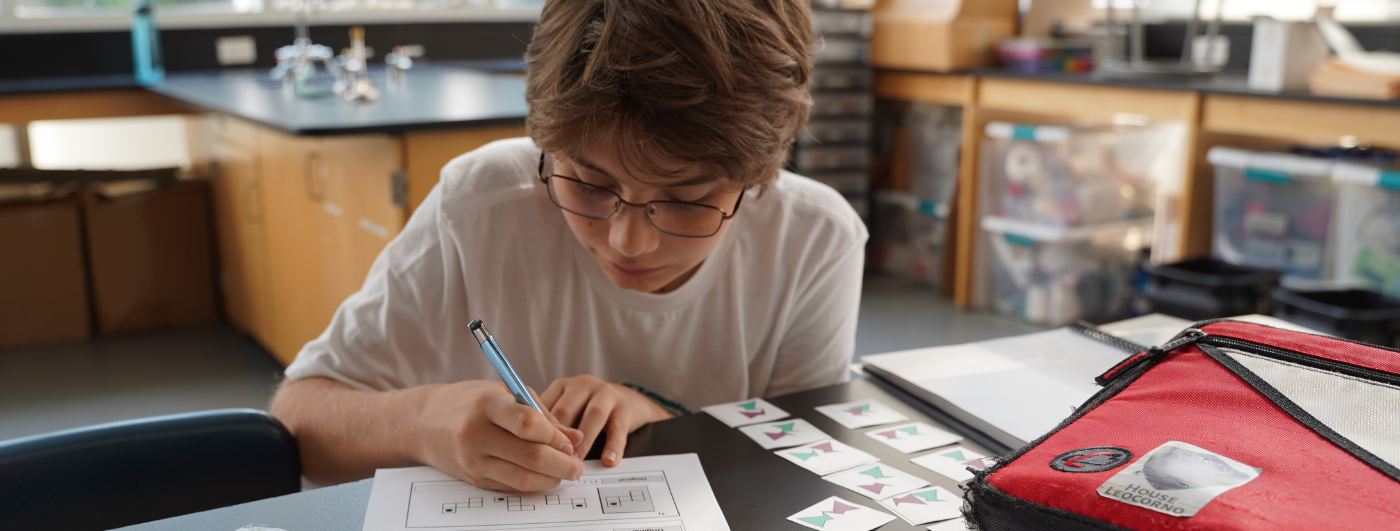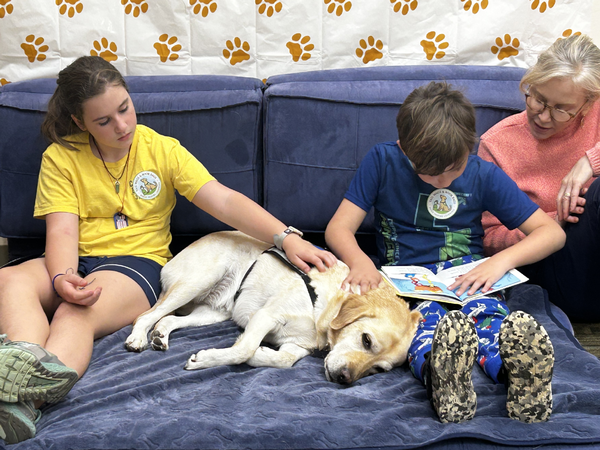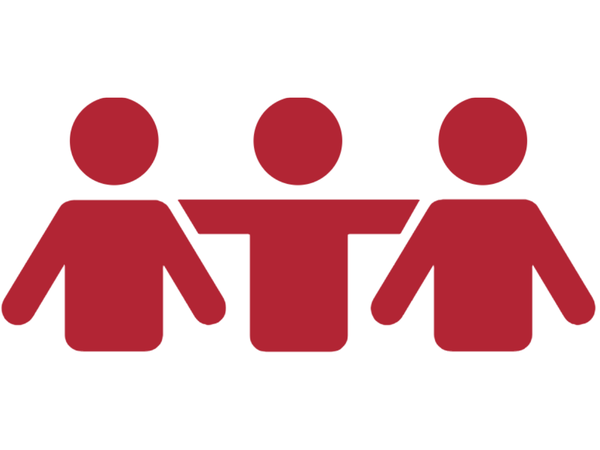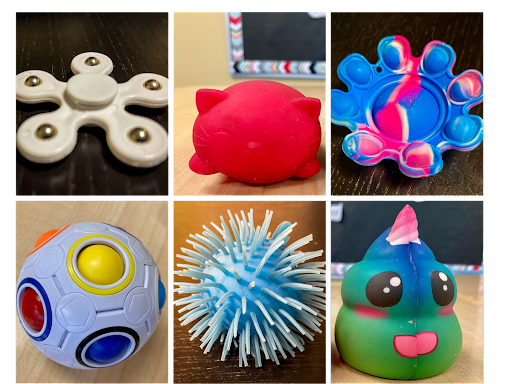Empowering students with language-based learning differences

Siena Blog



The Siena School Blog
Discover, Learn, Celebrate, and Empower
Welcome to Siena's blog, your source for helpful, cutting-edge resources tailored to teachers, parents, and other advocates in the learning differences community. We are dedicated to providing a wealth of curated knowledge spanning various topics, ranging from dyslexia advocacy and awareness to classroom teaching strategies, heritage month profiles, and social and emotional health.
Discover innovative classroom strategies that inspire creativity and foster a love of learning.
Our commitment to social-emotional wellness ensures that we provide valuable insights into healthy student development and self-advocacy.
Discover resources, reading and podcast recommendations, volunteering opportunities, and more for parents in the LD community.
Our important heritage month posts highlight key people, offer reading and podcast recommendations, and more.
The Benefits of Reading to Dogs

Avg. Read Time 3-4 min.
Siena Community Connections and Service
Wider community partnerships and intentional community outreach are key parts of The Siena School’s mission and commitment for all students to boost important literacy skills and social-emotional awareness.
A particularly valuable service and experiential learning opportunity for Siena Northern Virginia students was a recent elementary field trip to Oakton Library in Virginia for an event with Tail Wags & Book Bags, a DC-area nonprofit organization that connects assistance dogs with educators and schools to benefit LD and neurodiverse students.
Boosting Literacy Skills by Reading to Dogs
Siena Northern Virginia elementary students recently took a special trip to the Oakton Library for a visit with Karma, a certified therapy dog, and her owner, Karin Hemphill — an educator and Executive Director of the DC-area nonprofit Tail Wags and Book Bags, which partners with schools to inspire young readers.
During their time together, students took turns reading aloud to Karma, who listened patiently and attentively. Her calm, friendly presence helped Siena’s young readers feel comfortable and confident sharing their stories — as well as highlight their commitment to learning by doing and giving back.
.png)
Karma, a Yellow Labrador Retriever, was trained by Canine Assistants and ultimately became a therapy dog rather than a service dog. She can do other things (e.g., retrieve items and sign out books with her library card).
Siena Northern Virginia is planning more visits with Karma in the future. Karma’s visit reminded everyone that encouragement can come in many forms, even a wagging tail and a gentle nudge. This experience not only supported literacy skills but also nurtured perseverance, empathy, and joy in learning.
Learning by doing and nurturing social-emotional growth are essential parts of every child’s journey at Siena. Experiences like reading with therapy dogs build self-esteem, strengthen communication, and show students that reading can be joyful, calming, and empowering.
Benefits of Reading to Dogs
There’s a growing body of research showing that when children read aloud to dogs, there are real benefits for adolescents’ fine and gross motor skills, spatial awareness, anxiety, depression, and more (Source: Tail Wags & Book Bags).
Here are some additional sources to help understand the layered benefits of reading to dogs — which Siena Northern Virginia students experienced firsthand:
- One study found that second-grade students who read aloud to dogs showed significantly improved attitudes toward academic reading (Source: Tufts Now)
- A Canadian study of 7- to 8-year-olds found that reading performance, social competence, and behavior, improved particularly after reading to a dog rather than to an adult alone (Source: PubMed)
- More generally, children reading to dogs report feeling less anxious, more relaxed and more confident about reading — because the dog offers a comforting, non-judgmental audience (Source: Family Education)
- The literacy organization Tails That Teach notes that having a domesticated animal present while reading can increase reading fluency by 12-30% in some settings (Source: Tails That Teach)
While the research is still evolving, there’s a clear takeaway: reading to a therapy dog can motivate young readers, reduce performance-pressure, build confidence and engagement — all important ingredients for the literacy growth and social-emotional awareness that is central to The Siena School’s mission.
Additional Siena Resources
See The Siena School blog for more posts of interest, including Mental Health Awareness Month 2025, Learning Differences and Student Confidence, and the benefits of Dyslexia-Friendly Book Editions.
The Siena School, a nationwide dyslexia education leader currently in its 20th year, serves bright, college-bound students with language-based learning differences on DC Metro area campuses in Silver Spring, MD (grades 3-4 and 5-12) and Oakton, VA (grades 3-12).
Support and Self-Care Over the Holidays

Avg. read time: 3 min.
As we approach the holiday season, you may be feeling lots of emotions—excitement, gratitude, relief, anxiety, frazzle, overwhelm…sometimes all of these at once.
Rest assured: this is very normal.
I want to take this opportunity to share some tips and reminders for supporting both your families and yourselves—all year round but especially during the holiday season. Ultimately, I hope that you enjoy your time with those you care about, and I also encourage you to take time for yourself.
Parents Supporting Themselves
Holidays can be especially overstimulating for everyone; the impact on our neurodiverse population is more severe. This can require additional emotional support for families during what is also a fun and family-centric time.
During such an engaging and active time of year, remember that boundaries, self-care, and overall mindfulness are very important. Siena’s counseling office often shares holiday mental health tips with families, including:
- Schedule downtime: Holidays can very easily end up overscheduled with no time to relax, so reserve a few nights for your family (or just yourself!) to do whatever self-care works best.
- Eat, sleep, and hydrate: During the holidays, our routines are interrupted, and basic needs sometimes aren’t met. Help your family—and yourself—by prioritizing physical self-care.
- Get outside: Spending time outdoors can have major mental health benefits, such as lower stress, better mood, and increased empathy and cooperation. Make time to take daily walks.
- Acknowledge loss: For many people, the “happy holidays” come along with feelings of grief and anger. Maybe it’s the first holiday after a loved one’s passing, or there are traditions that highlight strained family relationships. Remind your children that their feelings are normal.
- Set everyone up for success: Plan ahead for (or avoid) situations that typically don’t go well for your family. Don’t be afraid to remove yourself or your kids when boundaries aren’t respected. Children especially may need your support to know it’s okay to leave a tense situation.
Parents needing extra support can see these Child Mind Resources with a laundry list of articles to refer to, including ones about traveling with children and taking the stress out of holiday gatherings.
Overall, the holidays are a great opportunity to gather with loved ones and engage in community traditions, which can also highlight neurodiverse students’ strengths, creativity, and energy.
Parents Supporting Neurodiverse Children
The needs of neurodiverse students was the central focus of Siena Forest Glen’s annual elementary and middle school performance. This fall the students performed an original adaptation of Fifty-Four Things Wrong with Gwendolyn Rogers, based on the novel by Caela Carter. Fifty-Four Things follows a girl who reads her confidential IEP report listing the emotional and personality traits that define who she is, including Lazy, Picky Eater, Talks Too Much, and many other things supposedly “wrong” with Gwendolyn.
By the end of Fifty-Four Things, though, everyone realizes Gwendolyn’s many strengths and energetic curiosity about the world around her. The story's major theme is how teachers and parents can meet neurodiverse children where they are and work with their differences and their diverse strengths. This resonated strongly with students, staff, and parents in the Siena community and matches how we support our students and embrace their strong qualities.
With ADHD diagnoses for children ages 3-17 rising, it’s especially urgent for parents and teachers to have shared knowledge about how to understand neurodiverse students like Gwendolyn. Among other available resources, these books are helpful guides in understanding neurodiversity and learning differences:
- Conquer Negative Thinking for Teens — Dr. Mary Karapetian and Alvord Anne McGrath
- Detox Your Thoughts — Andrea Bonior, PhD
- Freeing Your Child from Negative Thinking — Tamar Chansky, PhD
- How to Get Unstuck from the Negative Muck — Lake Sullivan, PhD
- Raising a Kid Who Can — Catherine McCarthy, Heather Tedesco, and Jennifer Weaver
- The Dyslexic Advantage — Drs. Brock and Fernette Eide
See also How Schools Can Support Neurodiverse Students from the Child Mind Institute.
The CDC regularly updates data and statistics on ADHD that affect students at home and in school. In the DC area, for example, The Chesapeake Center and Kingsbury Wellness offer testing and therapeutic services for families.
Additional Self-Care Resources
For additional information to navigate students’ social–emotional health, see posts about learning differences and confidence, online and offline boundaries for teens, and social media in our Social and Emotional Health section.
The Siena School, a national leader in dyslexia education, serves bright, college-bound students with language-based learning differences on DC Metro area campuses in Silver Spring, MD (grades 3-4 and 5-12) and Oakton, VA (grades 3-12).
Fidgets in the Classroom

“I like fidgets because I can use them under the desk. I also like them because they give me a bit more focus and I won't be moving around too much.”
—Siena Middle School Student
“It’s always nice to have it nearby. It makes me feel better. It’s comforting.”
—Siena Middle School Student
Pop Its...squeeze balls...infinity cubes: these have come to be known commonly as fidgets, but a generation or so ago, they might’ve been seen as toys for a student to hide or a teacher to confiscate.
Although they can be counterproductive when misused, fidgets can also be highly effective tools for students with ADHD, anxiety, and other difficulties that affect their performance in class.
There’s ample research to support the benefits of fidgets for children and adults, particularly students with ADHD or sensory processing needs. Sydney Zentall, a professor of Educational Studies at Purdue, has written about the importance of multisensory activities accompanying a primary task (such as listening to music while writing a paper). This recent piece in ADDitude draws on Zentall’s work: “Intentional fidgets allow you and your child to self-regulate ADHD symptoms in a controlled, constructive fashion.” (See below for additional reading and resources.)
Siena Middle School Humanities Teacher Meredith Shinners follows this principle of controlled and constructive fidget use in her classes: “I love when students can appropriately use them to calm their bodies and give them some movement in their hands. Students are most successful with a fidget if it is a simple motion back and forth.” Both Shinners and Reading Teacher Leslie Holst strongly prefer fidgets that can be inconspicuous and used under students’ desks—that is, out of sight and out of hearing.
Holst adds an important caveat: “Fidgets are positive and constructive classroom tools only when respecting everyone else’s ability to learn.” So, how can fidgets be both beneficial to students themselves and not detrimental to those around them?
Why Students Use Fidgets
“I like the fidgets because they help keep me occupied and not space out.”
—Siena Middle School Student
When used appropriately as tools of grounding and self-regulation, fidgets such as these can be beneficial:
- Squeeze ball (e.g., an Isoflex grip ball)
- Therapy putty
- Infinity cube
- Fidget cube
- Pop It
- Baby Porcupine Ball
- Fidget jewelry (e.g., rings that double as manipulatives, or beaded bracelets from Old Soul)
- Elastic desk straps like Bouncy Bands
- Fidget stools (see these from Hokki and Kore)
For this elementary student, fidgets make her “de-stressed and calm” in physically redirecting any inner anxiety:
Inspired Treehouse reminds us that “Fidgets provide us with subtle movement and touch input that can help calm our bodies and keep our minds attentive, alert, and focused. Movement [is] a powerful component of focus and problem solving and fidgets provide an outlet for small movements of the hands while we work.”
There are clear benefits of movement for ADHD support in the classroom, including heightened alertness and better information processing. A wobble stool, for example, lets students move some parts of their bodies in a controlled, non-disruptive way (instead of pacing around the room or having to take frequent walks in the halls). Regular movement and multisensory learning are integral to Siena’s approach to teaching, so fidgets in the classroom are often another way to maximize learning and performance.
For students with anxiety, there’s comfort in knowing that their fidgets are there, even if they don’t need to use them for focus when working. One middle schooler made her own squeeze ball (a balloon filled with beads) and finds it “nice to use” for calming and focusing during class. Different textures and colors can additionally help anxious students ground themselves.
Teacher Advice for Fidgets in the Classroom
“For the most part, they use them appropriately to help them focus. We try to limit it to 1 fidget per student so that things don’t get lost in the mix.”
—Shannon Robichaud, Siena Elementary Teacher
Siena teachers understand the benefits and risks of fidget use—such as when it becomes the primary focus instead of the teacher and their lesson. The more that students understand that an infinity cube or fidget stool is a tool to improve focus and assuage anxiety, the more their fidgets won’t become toys to distract them or their classmates from learning. Instead, the tool helps them channel extra energy in productive, classroom-appropriate ways.
When fidgets are used constructively and respectfully in a classroom, they can improve students’ focus, performance, and self-regulation. Shinners suggests that teachers implement clear policies for fidget use and misuse: “Fidgets can’t be a visual or auditory distraction to anyone, so students can use silent fidgets under the desk. We talk a lot about how fidgets become toys if you’re looking at and playing with them, so they get put away.”
There’s an important learning trajectory that Siena students follow from elementary school through middle and high school with regard to fidgets. An elementary or younger middle school student might not realize that while their fidget cube calms them, it can irritate their classmates due to the clicking noise. In both learning how to learn and how to respect others’ learning while at Siena, students gradually develop the higher-level thinking to be aware of how their actions and body movements affect others.
“Students are still learning the socially acceptable ways to maintain their attention or manage their anxiety in the classroom,” Holst notes. “8th graders and high schoolers are generally better at using fidgets to maintain their attention or calm their anxiety. They understand the connection between the object and how it makes them feel.”
Resources for Fidgets in the Classroom
25 Best Fidget Toys and Devices For a More-Focused Classroom (2021)
ADHD Fidgeting Builds Focus: Body-Brain Connections (2021)
ADHD Fidgeting Strategies That Promote Focus (2021)
The Guide To Introducing Fidgets To The Classroom (2021)
Fidgets are Tools, Not Toys (2019)
17 Ways to Help Students With ADHD Concentrate (2018)
How to Introduce Fidget Toys in the Classroom (2017)
Teacher Tip: The Dos and Don’ts of Fidgets for Kids (2016)
10 Solutions for Students Who Fidget in the Classroom (2015)
